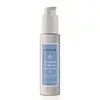What's inside
What's inside
 Key Ingredients
Key Ingredients

 Benefits
Benefits

 Concerns
Concerns

No concerns
 Ingredients Side-by-side
Ingredients Side-by-side

Water
Skin ConditioningGlycerin
HumectantBetaine
HumectantPropanediol
SolventIsostearyl Isostearate
EmollientCaprylic/Capric Triglyceride
MaskingC9-12 Alkane
SolventGlyceryl Glucoside
HumectantIsononyl Isononanoate
Emollient1,2-Hexanediol
Skin ConditioningSpirulina Maxima Extract
SmoothingPalmitoyl Tetrapeptide-7
Skin ConditioningRosmarinus Officinalis Leaf Extract
AntimicrobialHydrolyzed Sodium Hyaluronate
Skin ConditioningSodium Hyaluronate
HumectantCoco-Caprylate/Caprate
EmollientCaprylyl/Capryl Glucoside
CleansingEthylhexylglycerin
Skin ConditioningSucrose
HumectantLecithin
EmollientChrysin
Skin ConditioningParfum
MaskingSodium Acrylate/Sodium Acryloyldimethyl Taurate Copolymer
Emulsion StabilisingPentylene Glycol
Skin ConditioningEthylhexyl Isononanoate
EmollientPolyisobutene
Disodium EDTA
Xanthan Gum
EmulsifyingCitric Acid
BufferingSorbitan Oleate
EmulsifyingSodium Hydroxide
BufferingPhenoxyethanol
PreservativeLinalool
PerfumingLimonene
PerfumingWater, Glycerin, Betaine, Propanediol, Isostearyl Isostearate, Caprylic/Capric Triglyceride, C9-12 Alkane, Glyceryl Glucoside, Isononyl Isononanoate, 1,2-Hexanediol, Spirulina Maxima Extract, Palmitoyl Tetrapeptide-7, Rosmarinus Officinalis Leaf Extract, Hydrolyzed Sodium Hyaluronate, Sodium Hyaluronate, Coco-Caprylate/Caprate, Caprylyl/Capryl Glucoside, Ethylhexylglycerin, Sucrose, Lecithin, Chrysin, Parfum, Sodium Acrylate/Sodium Acryloyldimethyl Taurate Copolymer, Pentylene Glycol, Ethylhexyl Isononanoate, Polyisobutene, Disodium EDTA, Xanthan Gum, Citric Acid, Sorbitan Oleate, Sodium Hydroxide, Phenoxyethanol, Linalool, Limonene
Water
Skin ConditioningGlycerin
HumectantPropanediol
SolventHydrolyzed Hyaluronic Acid
HumectantSodium Hyaluronate
HumectantApricot Kernel Oil Polyglyceryl-6 Esters
EmollientPolyglyceryl-6 Oleate
EmulsifyingCaprylyl Glycol
EmollientPolyglyceryl-10 Oleate
Skin ConditioningAcrylates/C10-30 Alkyl Acrylate Crosspolymer
Emulsion StabilisingMagnolol
AntioxidantKaempferol
AntioxidantTetrahexyldecyl Ascorbate
AntioxidantGlycolipids
Skin ConditioningGlycine Soja Sterols
EmollientTocopheryl Acetate
AntioxidantPhenoxyethanol
PreservativeSorbitan Palmate
EmollientPotassium Sorbate
PreservativeSodium Hydroxide
BufferingGlyceryl Polyacrylate
Xanthan Gum
EmulsifyingHexylene Glycol
EmulsifyingWater, Glycerin, Propanediol, Hydrolyzed Hyaluronic Acid, Sodium Hyaluronate, Apricot Kernel Oil Polyglyceryl-6 Esters, Polyglyceryl-6 Oleate, Caprylyl Glycol, Polyglyceryl-10 Oleate, Acrylates/C10-30 Alkyl Acrylate Crosspolymer, Magnolol, Kaempferol, Tetrahexyldecyl Ascorbate, Glycolipids, Glycine Soja Sterols, Tocopheryl Acetate, Phenoxyethanol, Sorbitan Palmate, Potassium Sorbate, Sodium Hydroxide, Glyceryl Polyacrylate, Xanthan Gum, Hexylene Glycol
 Reviews
Reviews

Ingredients Explained
These ingredients are found in both products.
Ingredients higher up in an ingredient list are typically present in a larger amount.
Glycerin is already naturally found in your skin. It helps moisturize and protect your skin.
A study from 2016 found glycerin to be more effective as a humectant than AHAs and hyaluronic acid.
As a humectant, it helps the skin stay hydrated by pulling moisture to your skin. The low molecular weight of glycerin allows it to pull moisture into the deeper layers of your skin.
Hydrated skin improves your skin barrier; Your skin barrier helps protect against irritants and bacteria.
Glycerin has also been found to have antimicrobial and antiviral properties. Due to these properties, glycerin is often used in wound and burn treatments.
In cosmetics, glycerin is usually derived from plants such as soybean or palm. However, it can also be sourced from animals, such as tallow or animal fat.
This ingredient is organic, colorless, odorless, and non-toxic.
Glycerin is the name for this ingredient in American English. British English uses Glycerol/Glycerine.
Learn more about GlycerinPhenoxyethanol is a preservative that has germicide, antimicrobial, and aromatic properties. Studies show that phenoxyethanol can prevent microbial growth. By itself, it has a scent that is similar to that of a rose.
It's often used in formulations along with Caprylyl Glycol to preserve the shelf life of products.
Propanediol is an all-star ingredient. It softens, hydrates, and smooths the skin.
It’s often used to:
Propanediol is not likely to cause sensitivity and considered safe to use. It is derived from corn or petroleum with a clear color and no scent.
Learn more about PropanediolSodium Hyaluronate is hyaluronic acid's salt form. It is commonly derived from the sodium salt of hyaluronic acid.
Like hyaluronic acid, it is great at holding water and acts as a humectant. This makes it a great skin hydrating ingredient.
Sodium Hyaluronate is naturally occurring in our bodies and is mostly found in eye fluid and joints.
These are some other common types of Hyaluronic Acid:
Learn more about Sodium HyaluronateSodium Hydroxide is also known as lye or caustic soda. It is used to adjust the pH of products; many ingredients require a specific pH to be effective.
In small amounts, sodium hydroxide is considered safe to use. However, large amounts may cause chemical burns due to its high alkaline.
Your skin has a natural pH and acid mantle. This acid mantle helps prevent harmful bacteria from breaking through. The acid mantle also helps keep your skin hydrated.
"Alkaline" refers to a high pH level. A low pH level would be considered acidic.
Learn more about Sodium HydroxideWater. It's the most common cosmetic ingredient of all. You'll usually see it at the top of ingredient lists, meaning that it makes up the largest part of the product.
So why is it so popular? Water most often acts as a solvent - this means that it helps dissolve other ingredients into the formulation.
You'll also recognize water as that liquid we all need to stay alive. If you see this, drink a glass of water. Stay hydrated!
Learn more about WaterXanthan gum is used as a stabilizer and thickener within cosmetic products. It helps give products a sticky, thick feeling - preventing them from being too runny.
On the technical side of things, xanthan gum is a polysaccharide - a combination consisting of multiple sugar molecules bonded together.
Xanthan gum is a pretty common and great ingredient. It is a natural, non-toxic, non-irritating ingredient that is also commonly used in food products.
Learn more about Xanthan Gum